
If you’ve never had a plant break your heart, try growing a gardenia!
Gardenias blooms are the work of a fairy tale, if that fairy tale is Goldilocks and the Three Bears. Everything needs to be “just right” for Goldilocks (I mean gardenia) to settle into your garden. You need just the right amount of sunlight, just the right temperature and just the right amount of water.
The issue is often not that gardenias don’t produce flowers, but that once they do set buds, the buds will often turn brown and drop without ever opening. In a way, getting your hopes up leads to more disappointment when your gardenia fails to flower, doesn’t it?
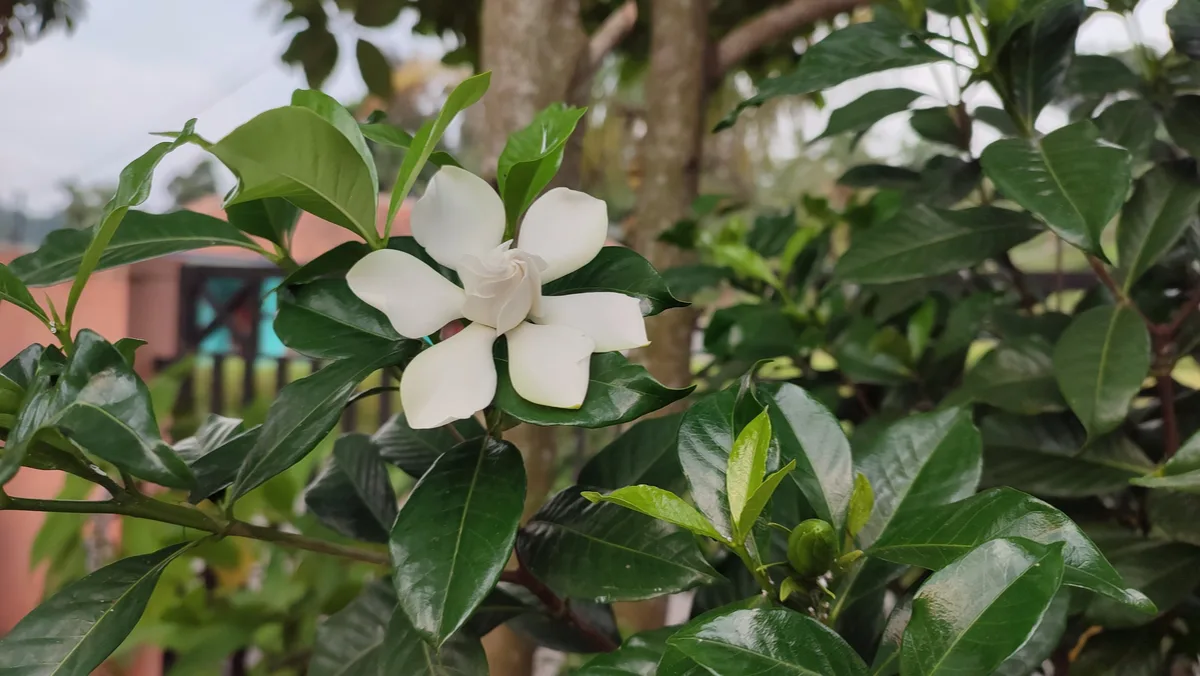
But don’t take all the blame for unhappy gardenias. These plants have a reputation for being high-maintenance, which is not at all helped by the transition from the grower’s greenhouse to your own backyard.
In a commercial greenhouse setting, experienced growers have the right environmental conditions to keep gardenias happy. They can easily control the temperature, humidity and amount of nutrients that plants get.
Most plants need a period of acclimation when they transition from this ideal environment to whatever our backyards offer. But gardenias, being particularly sensitive to even the slightest of changes, often don’t weather this period of adjustment very well.
So while their glossy dark-green foliage and fragrant blooms beckon, don’t allow yourself to be tempted too many times by this siren’s call.
Gardenias are a little bit finicky and temperamental, but with a little bit of maintenance and a whole lot of patience, they’ll grow into beautiful ornamental flowers that will take pride of place in your garden.
If you’re brave enough to attempt growing this plant in your garden, but think that your gardenia may not bloom this year, here are a few reasons why and how to fix them.
1. Your gardenia needs just the right amount of sunlight.
If there were such a thing as an equation for perfect gardenias, it would look like this:
Bright light + cool temperatures + high humidity = happy gardenia
If only this were so easy to achieve, right?
The problem, as you may have noticed, is that the three elements above don’t necessarily go well together. A lot of sunlight is often accompanied by warmer temperatures and it doesn’t always come with high humidity.
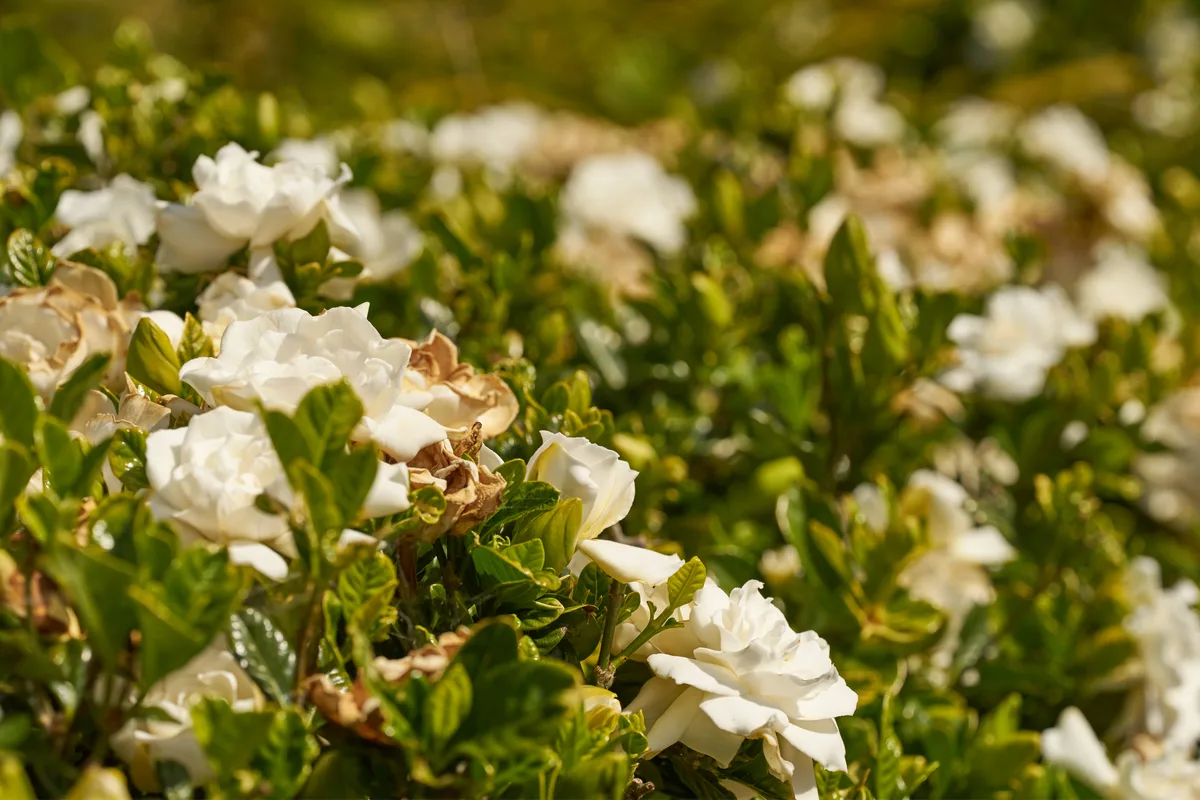
Gardenias grow best in USDA zones 8-12, and they grow especially well in microclimates that mimic those of their tropical and subtropical native regions in Asia, Africa and Australia. Your gardenia will thrive in full sun to partial shade, but with some caveats. It’s better if it gets the full four to six hours of sun in the morning, rather than strong midday sun. And it’s even better if the partial shade is dappled shade, rather than full shade. Heavy shade will lead to a poor blooming pattern in the spring and summer.
If your gardenia is getting heat stress from too much direct sunlight combined with high temperatures, the buds will form, but they may just turn brown and drop before they’ve had a chance to open. On the other hand, if the plant isn’t getting enough sun, it may even fail to set blooms.
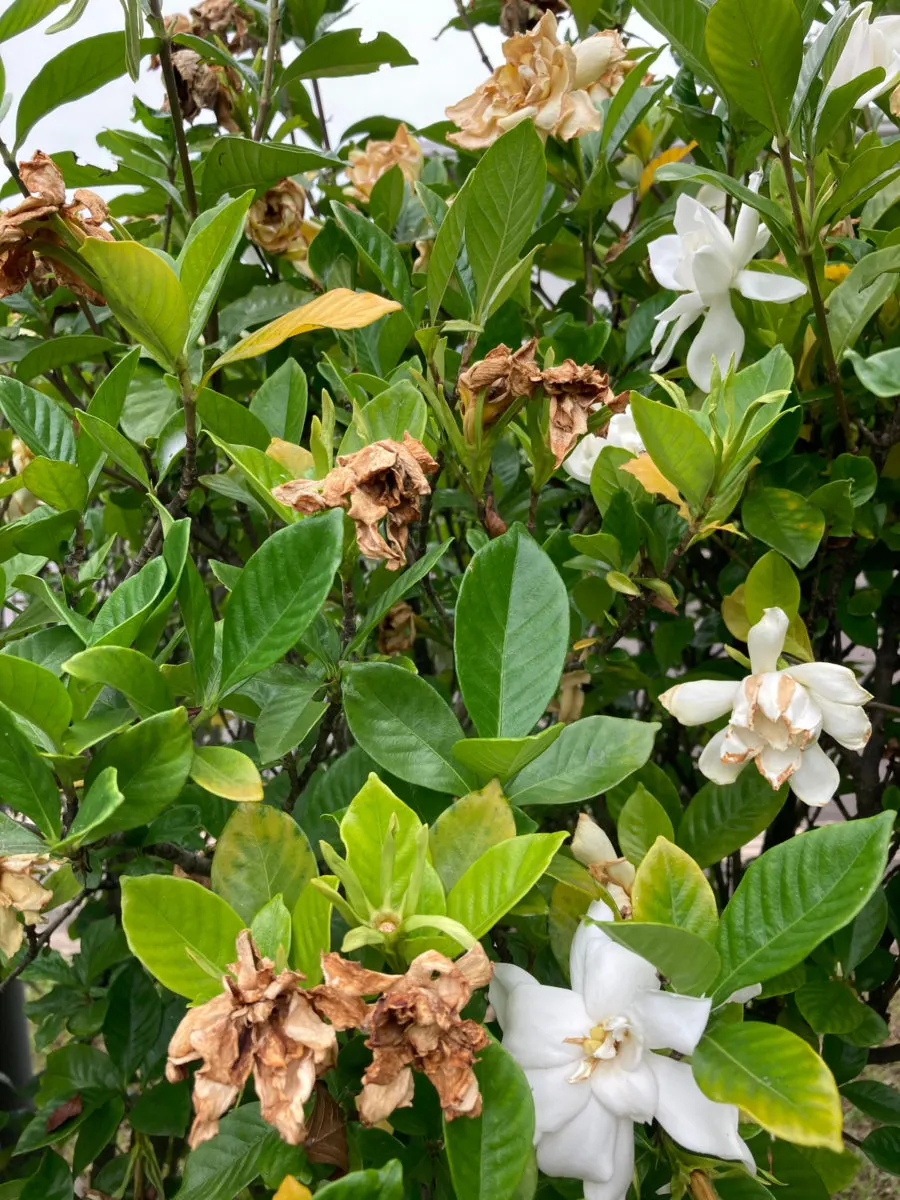
Like I mentioned above, your gardenia will not like too much of either extreme. They will not bloom to their full potential if the temperatures are too warm or too cold.
Gardenias prefer cool nighttime temperatures of around 50F, but no higher than 60F, and mild daytime temperatures that hover around 70-75F. They also need at least 12 hours of continuous darkness to form buds, so make sure you don’t plant your camellia under porch lights or flood lights that stay on all night long.
Let me reiterate that gardenias are fickle plants and any sudden temperature swing may cause both bud drop and leaf drop, even in a mature plant.
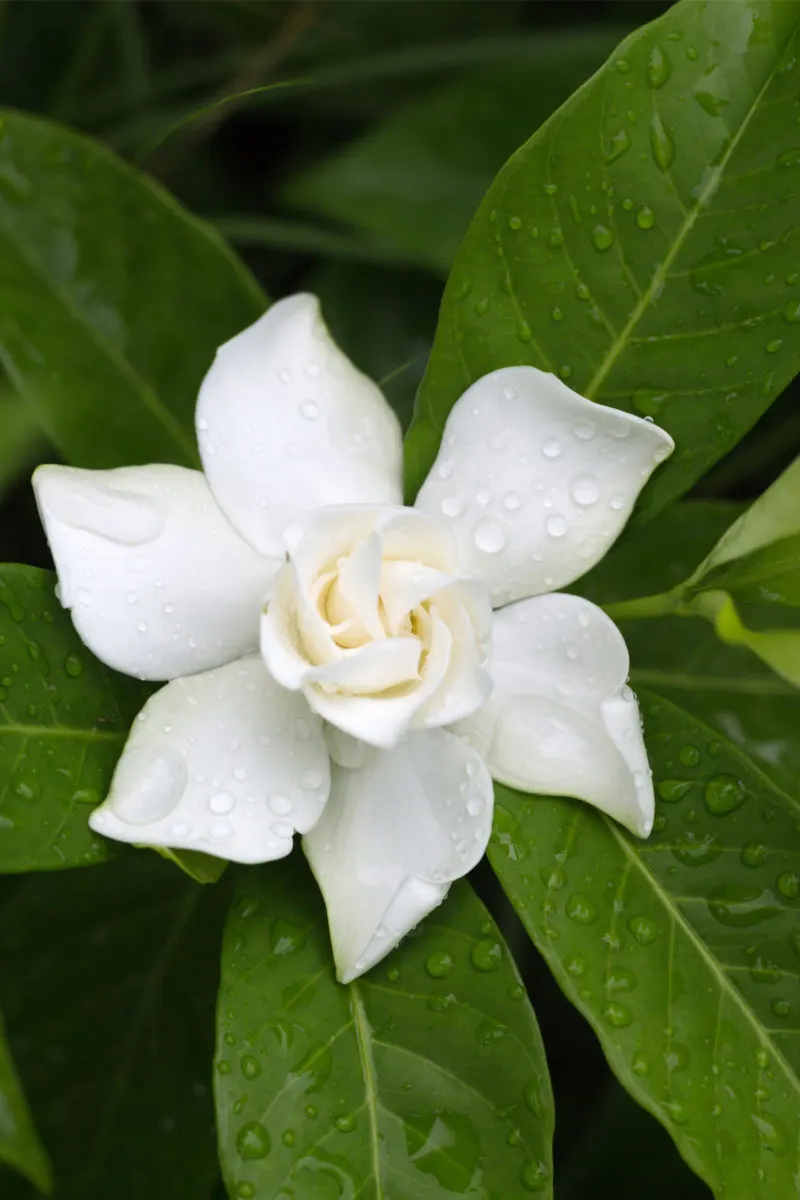
If you need to relocate your gardenia to a sunnier location, you’ll have to wait until fall to do so. Gardenias don’t tolerate root disturbance very well, so it’s important that when you lift it out of the ground, you take as much of the root structure as you can safely manage. Transplant it at the same depth in its new location.
2. Your gardenia needs acidic soil.
Gardenias require acidic soil with a pH between 5.0 and 6.0 in order to bloom. Because gardenias are so precious, and often on the expensive side compared to the average blooming plant, you should do a soil test before deciding whether to purchase a gardenia for your garden.
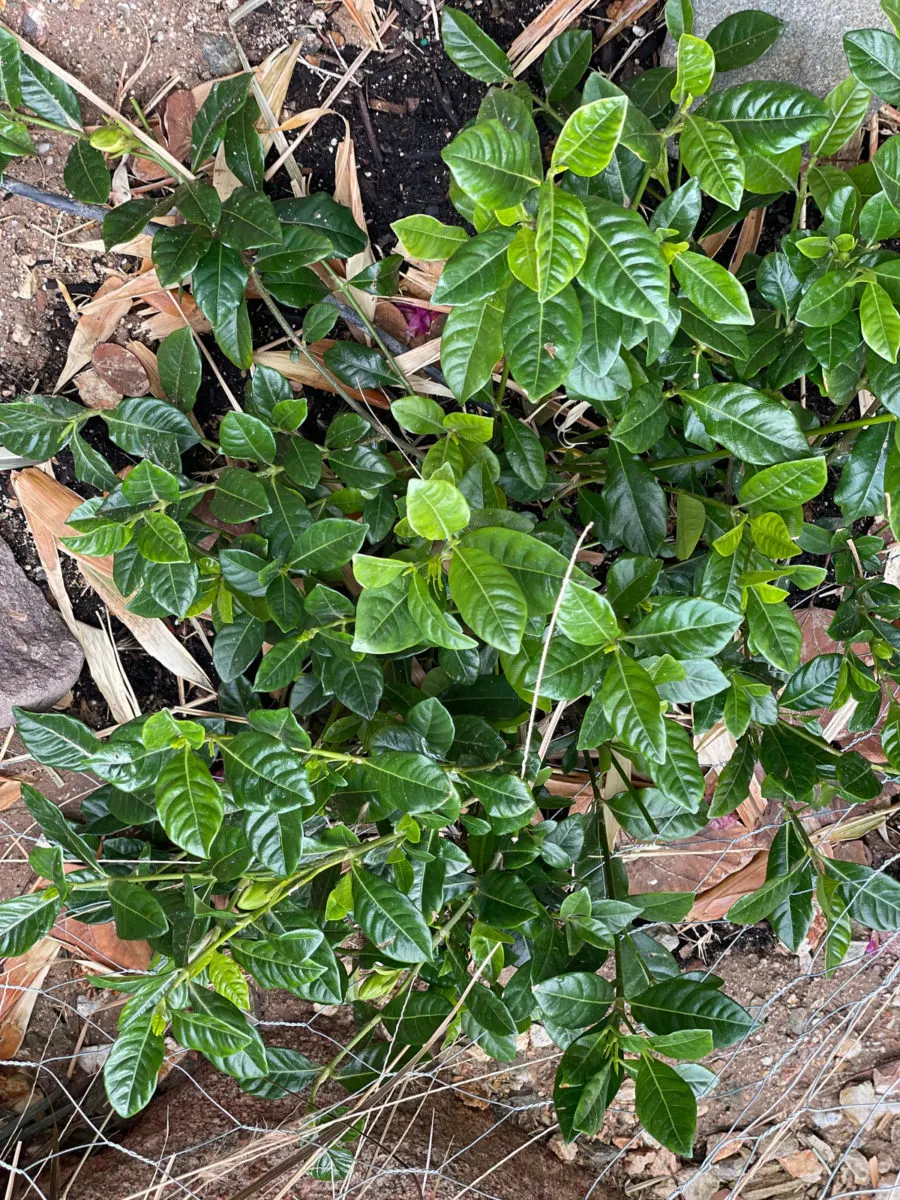
You can amend your soil to turn it more acidic by working more organic matter into your planting bed. Compost, ground bark, pine needles and straw are all good choices that will help improve the acidity of your soil. Have a look at this article for a few more ideas on how you can make your soil more acidic.
3. Your gardenia needs adequate moisture.
Not enough moisture in the soil or too much moisture can cause the maligned bud drop in gardenias.
If your gardenia doesn’t get sufficient water from the soil, it will drop its buds before opening in order to conserve resources during the dry periods. Similarly, if your gardenia is planted in poor-draining soil, where the water just pools around the roots, your gardenia may struggle with root rot.
Deep-water your plant when the top two inches of the soil feel dry to the touch and make sure you keep the soil evenly moist. If you’re thinking that drip irrigation will do the trick, I’m afraid it’s not that simple.
A small amount of shallow watering at a time encourages the development of shallow roots which are less useful to the plant for absorbing nutrients. Deep-watering is important for plants that bloom because it encourages a strong root system. Make sure to keep watering even after the plant has bloomed in order to promote vigorous development for the next growing season.
While you’re at it, make sure you don’t get water on the leaves or the buds.
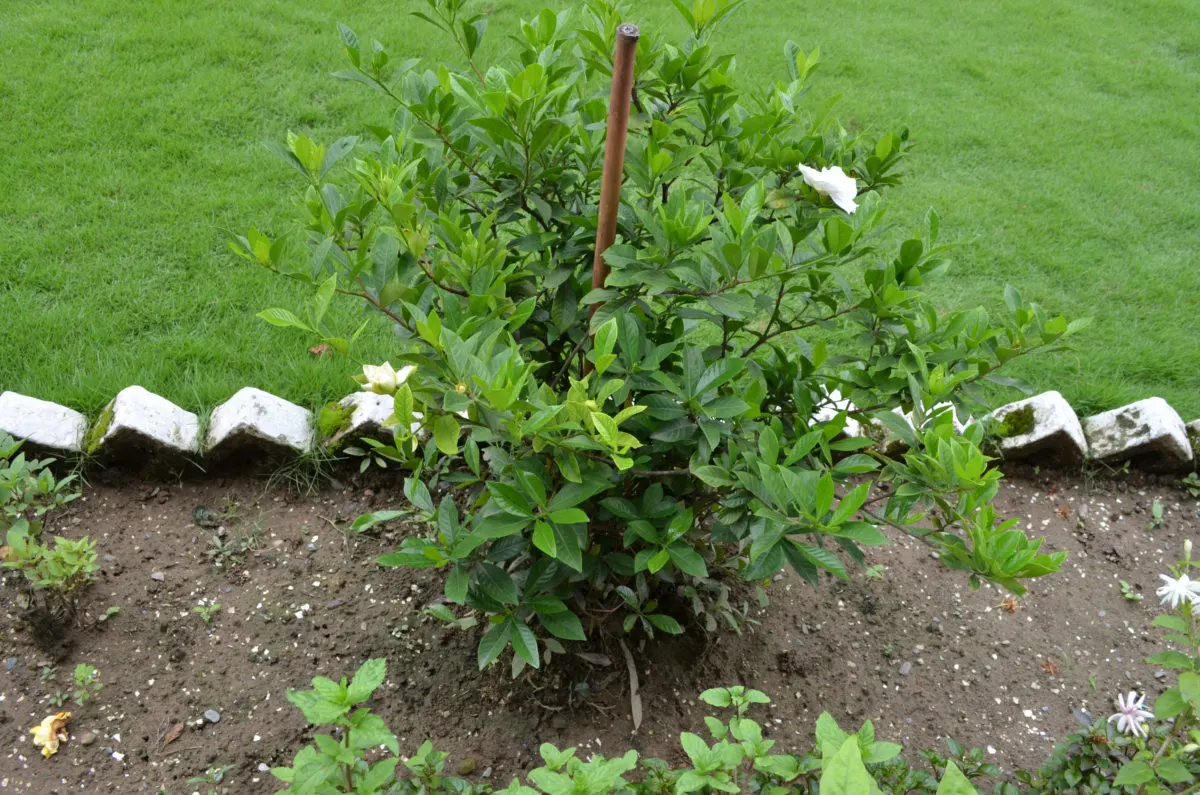
A good layer of mulch will do wonders in keeping the soil evenly moist and keeping the underground temperature constant, even during periods of intense heat. A good choice of mulch is one that will acidify your soil when it breaks down, such as bark or pine needles.
4. Your gardenia needs adequate nutrients.
Gardenias will thrive in nutrient-rich soil. Your first order of business should be to improve the soil by adding organic compost and well-rotted manure before you put a new plant into the ground. Add another layer every year during spring to counteract soil depletion.
You can also fertilize your gardenia with the same fertilizer you use for your other acid-loving plants, such as rhododendrons and camellias. You can use a 10-8-8 or a 12-6-6 fertilizer monthly or every six weeks from March until the end of August, but avoid fertilizing late into the year.
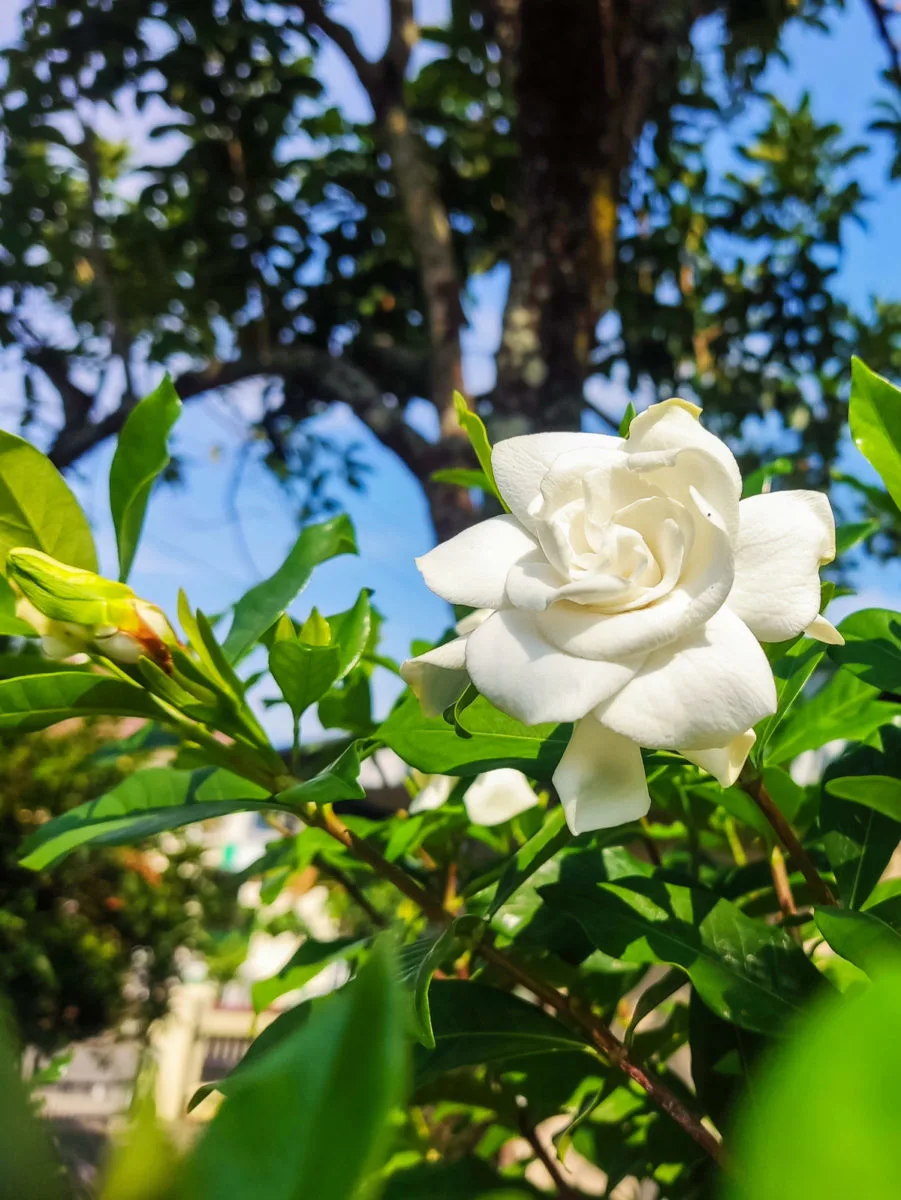
Late fall fertilizing encourages fresh growth that is very vulnerable to low temperatures. So you should allow the plant enough time to enter dormancy and prepare for the cold season.
It’s worth mentioning that too much fertilizer will also hurt your gardenia. Adding fertilizer that’s too concentrated or adding it too often causes an excess of salts in the soil that may lead to root dehydration.
5. Your gardenia should be kept free of pests.
Unfortunately, gardenia is a pest magnet and pests can interfere with flower formation and bloom. Unwanted guests such as aphids, whitefly, thrips and spider mites are a common sight on new gardenia growth.
To preempt infestations, check the foliage of your gardenia regularly, paying close attention to the undersides of the leaves and to the stems.
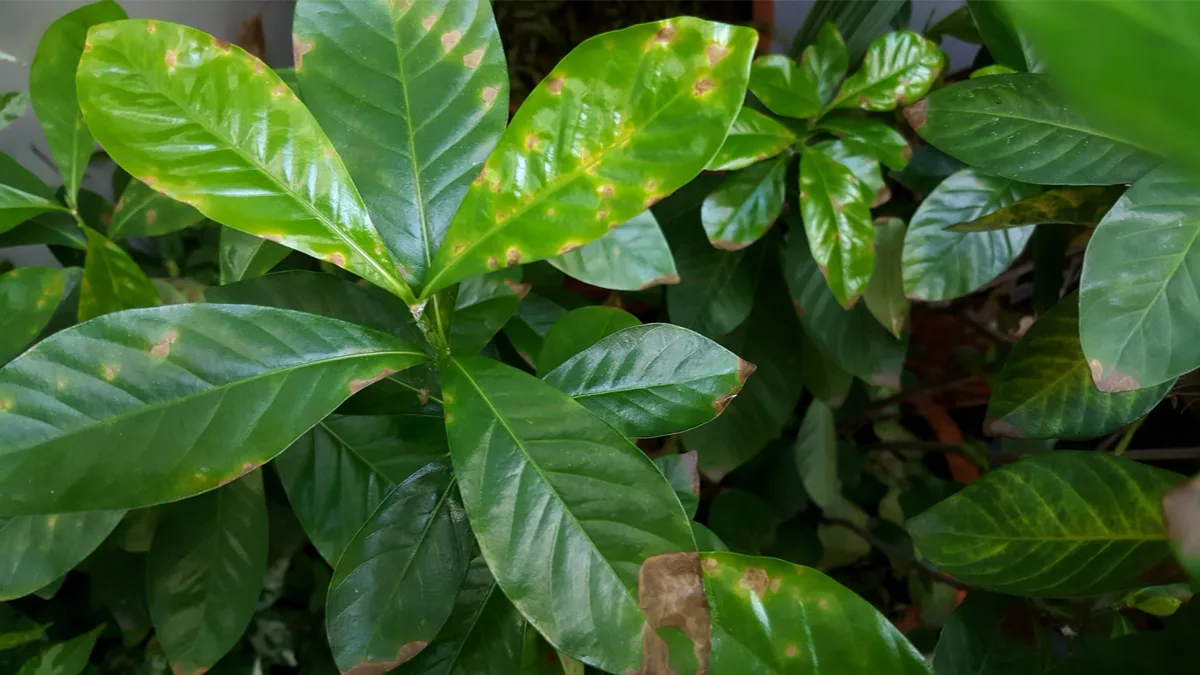
If you see signs of trouble, do your best to avoid the temptation of using synthetic insecticides that may harm both your plant and the local beneficial insect population. You can first try to remove the pests by hand or using a strong water jet. If you’ve left it a bit too late, and the infestation has spread, you can spray a neem oil solution straight on the spots that have been affected. You may need to repeat the process to make sure you get all the larvae and the nymphs.
6. Your gardenia won’t tolerate late pruning.
Your gardenia needs some light pruning in order to promote branching and keep the growing compact and harmonious in your landscape. However, since gardenias get ready for next year’s blooms during the previous late summer and fall, always make sure you prune early enough in the summer not to accidentally trim the new buds that have set. You can remove the blooms that have faded at any time, but wait until all the blooms are spent before you start cutting back stems and branches.
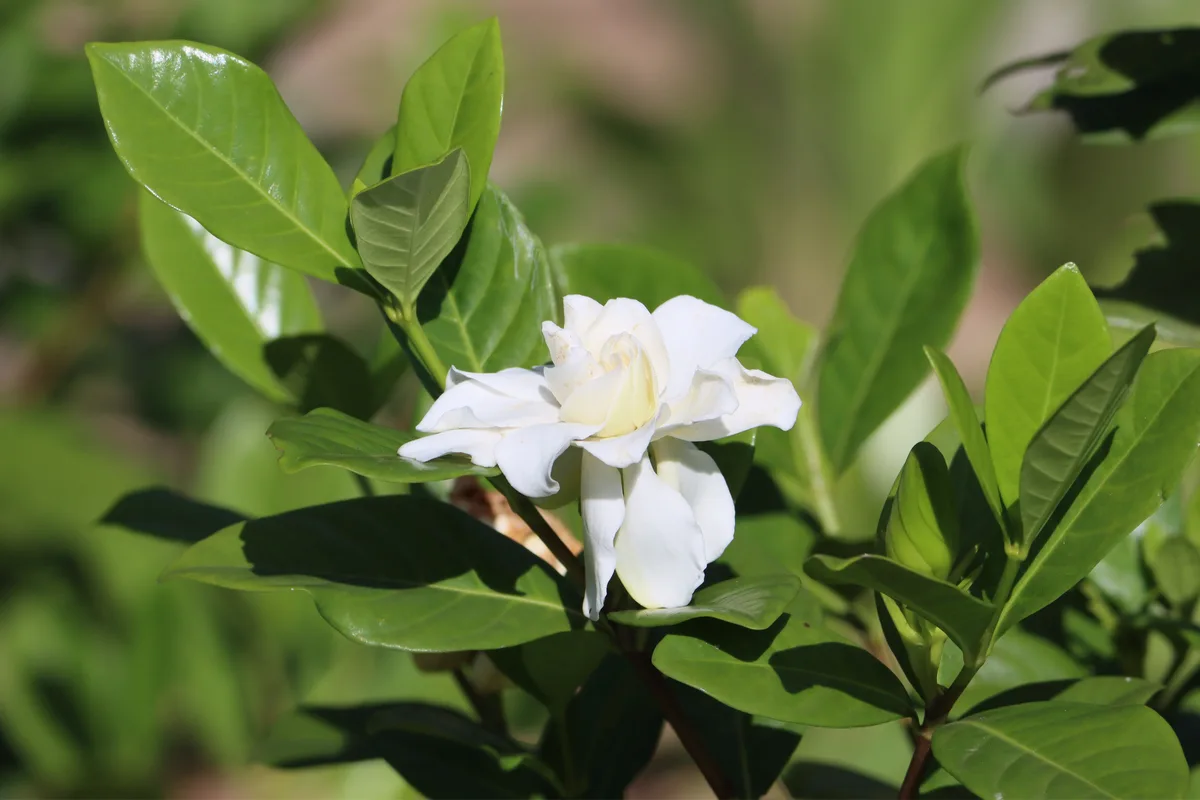
If you’re growing one of the newer gardenia cultivars that bloom twice in the same year, always time your pruning after the second bloom.
It’s true that gardenias are not for the faint of heart because they leave very little room for error. Granted, you’ll go through a rollercoaster of emotions, but with a bit of luck, you’ll come out on the other side as the proud gardener who got a gardenia to bloom.
As soon as their fragrant creamy white blooms open in spring, you’ll be happy you gave it your all. In milder climates, your efforts will be rewarded with almost two months of blooms.
